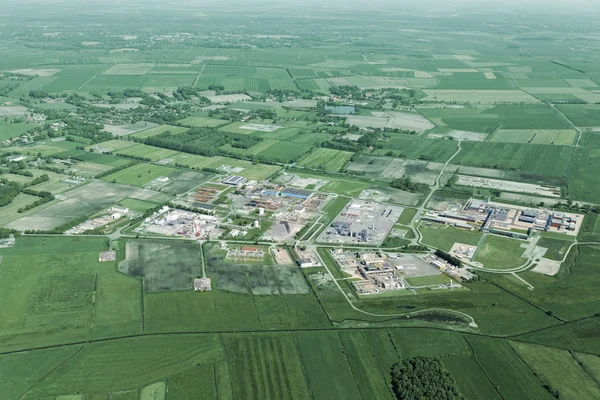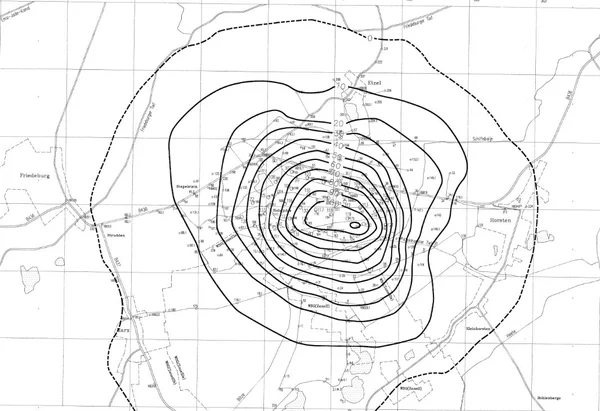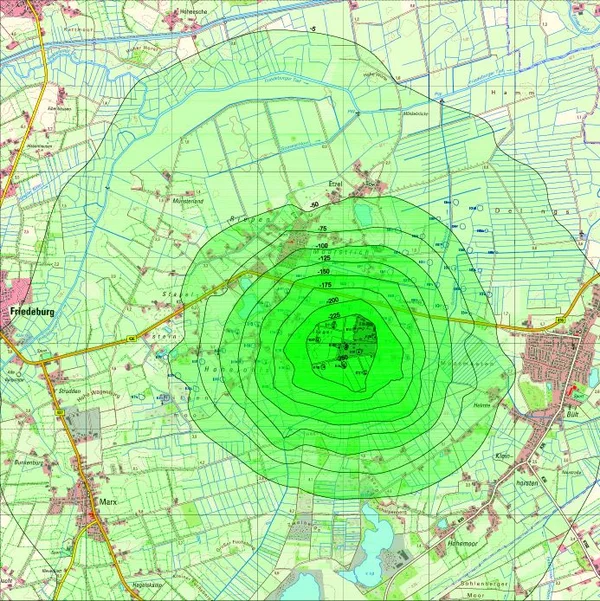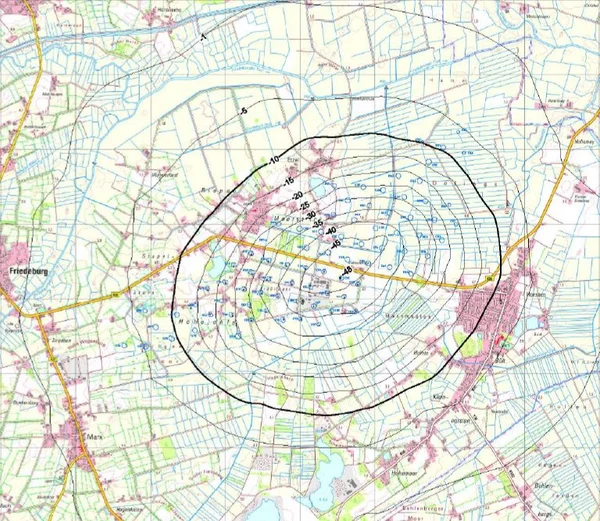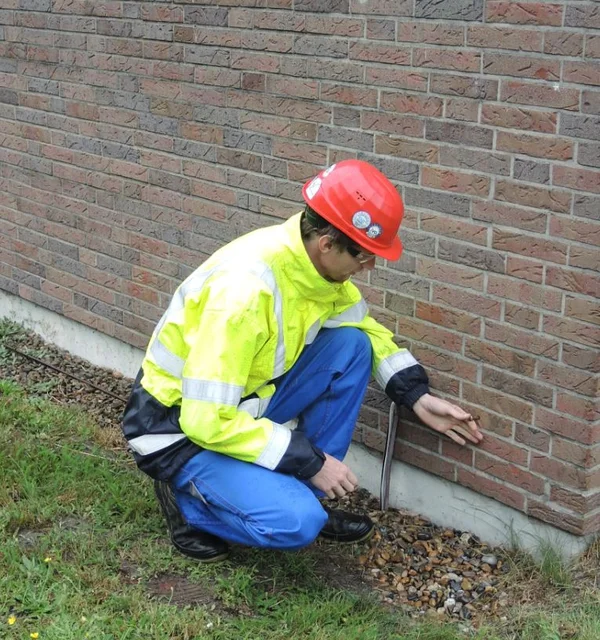Height measurement & building monitoring
Annual altitude measurement
Even before the first caverns of the Etzel cavern facility were excavated in 1974, monitoring of the surface for changes in elevation began at the Etzel site in order to record the effects of cavern construction and operation on the surface.
In addition to the magnitude of the changes in elevation, the extent of the area of influence, which is limited by the zero subsidence line above which no change in elevation can be detected, is also of interest. For this purpose, a so-called precision leveling is carried out annually by an independent expert in a close-meshed fixed point network, which is coupled to the official measurement network of the national survey.
Building monitoring
In 2015, STORAG ETZEL and the local citizens' initiative "Lebensqualität" had jointly agreed to initiate building monitoring as a confidence-building monitoring measure in the vicinity of the cavern facility for 36 properties with regard to possible subsidence damage and possible inclined positions.
51 building complexes monitored since 2018
Since 2015, a total of 51 building complexes with outbuildings, stables and garages have been monitored. The objects of observation are historical and public buildings, residential buildings and stables in the municipality of Friedeburg.
The respective initial measurements in the actual state are carried out by recognised experts. The respective observation objects are only approved after consultation with the owners. Afterwards, the building is surveyed with height bolts and then a zero measurement is carried out by a recognised expert.
Surveys and measurements are carried out every 5 years
Every 5 years, the buildings are also surveyed by an expert in order to detect any subsidence effects at an early stage. This monitoring procedure complies with the mining damage assessment and surveying processes recognised in Germany.
The buildings in question were surveyed at the respective time intervals in connection with the height observation (levelling) of the cavern field for possible inclinations. After consultation with the citizens' initiative, the measurement intervals were combined to 5 years in accordance with the provisions of the STORAG ETZEL framework operating plan of 2020.
Further objects will be included
The approval of the STORAG ETZEL general operating plan provides for the successive inclusion of further monitoring objects in the monitoring programme for buildings. The objects are specified by the responsible mining authority in the approval procedure for the general operating plan.
The survey overview of the building monitoring program can be viewed here:
